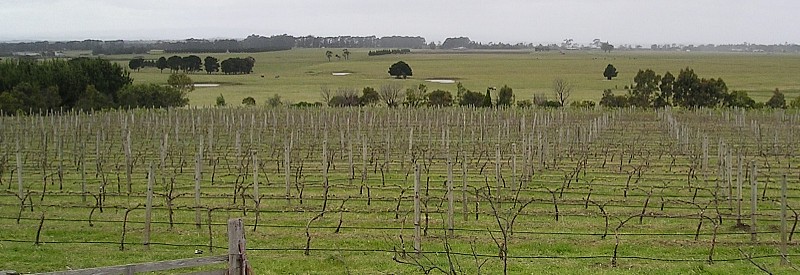Growing better pinot noir – Data Collection
Seasonal Cycle
| Season | Vineyard activity | Data collection |
|---|---|---|
| Spring | Fortnightly spraying against Powdery mildew and Downey mildew. Soil moisture monitored, irrigation if necessary. Foliage wires adjusted to allow fruit development and control vine development. Nutrients applied to soil if necessary. Mulch & straw topped up, herbicide applied. |
Vine growth and soil moisture recorded. |
| Summer | Continue spraying against mildew. Continue irrigation if necessary. Continue to adjust foliage wires. As berries colour and enlarge, protect bunches against birds and other pests. |
Soil and petiole samples collected. Soil moisture recorded. |
| Autumn | Continue irrigation if necessary. Continue to protect crop. Sample fruit for tasting. Grapes harvested. Post-harvest irrigation and nutrient application if necessary. |
Harvest data collected. Grapes juiced and fermented. Juice analysis for pH , tartaric acid and Brix . Juice and wine sample frozen for later analysis. |
| Winter | Vines pruned. Soil preparation. Trellis repairs. Weed control. |
Pruning weights measured. Trunk diameter measured. |

Protocol
| Measuring trunk diameter | Trunk diameter was measured during winter when vines were dormant. The measurement was taken 200mm above the soil surface. The trunk diameter of every vine sampled was measured. |
|---|---|
| Measuring vine growth | In September and October of 2001 and 2002 vine growth was monitored. Vine growth was monitored on one cane from one of the nine vines at each assessment point. The cane was selected at random. The growth stage of ten nodes on the cane was recorded. As the vineyard was grazed by sheep in 2002, where a bud had been damaged or eaten, no data was collected. |
| Taking soil samples | At each assessment site, two sets of 6 samples of soil were taken. Soil was collected using an auger to a depth of 50mm below the surface. One set of samples was sent to a laboratory to look for bacteria and fungus. The other set was sent to another laboratory for nutrient analysis. In this analysis, for example, a “Skene” test for removing potassium from the solid soil with hydrochloric acid was used. The “Olsen” test for removing phosphorus from the solid soil with bicarbonate soda was used. Other tests assessed the nutrients contained in the water held in the soil. |
| Taking petiole samples | Petiole tissues were sampled when most of the vines were in flower. (Note that soil and petiole samples were taken at the same time.) From each vine, the stalk from the bottom leaf opposite the lowest bunch of grapes was taken. |
| Measuring the yield | One week before the grapes were harvest, the number of bunches of grapes on each vine was counted. These bunches were harvested, put in a marked bucket and then weighed; the weight was recorded in kilograms. |
| Juicing grapes for analysis | After weighing, the grapes from nine vines at each assessment point were crushed together using a small commercial crusher. A sample of the juice was taken to determine the pH, Titration of tartaric acid, and Brix. The analysis was carried out at the winery. Vincent used an electronic pH meter to find the pH of the juice and the titrable acidity. A refractometer was used to measure Brix. |
| Measuring pruning weights | Three months after the harvest, the vines were pruned. The vines had been pruned to a standard form before the experiment began. During the experiment, vines in the trial were pruned to leave two canes each with 10 nodes including two two-node spurs. The total weight of the prunings in kilograms was measured. |
Hear about problems measuring trunk diameter
Click the play button to hear about problems with measuring trunk diameter. This is an audio clip. |
